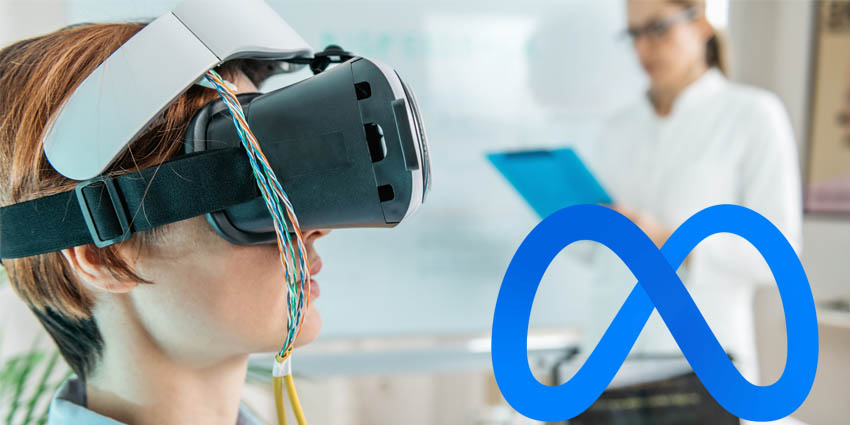发布时间:2022.04.13 14:05 访问次数: 作者:
返回列表
Say what you will, but the augmented reality (AR) glasses segment has been slow to take off. From an indecisive start in 2013, when Google Glass was first launched, we have come a long way – but have covered a surprisingly short distance.
It is estimated that AR glasses shipment will reach only 410,000 by the end of this year, while VR headset shipments are in the millions.
Why, then, is Facebook (now Meta) investing so heavily in neural biofeedback technology, EMG? Will EMG transform the AR glasses industry as we know it and provide Meta with a significant head start?
The signs, for now, are bullish, and EMG technology appears to be as close to “mind-reading” level intuitiveness as we can get when it comes to capturing human inputs to control the virtual world.
Electromyography or EMG is defined as a hardware technology that uses sensors to detect and record electrical activity from the muscles and convert it into input information for augmented reality wearables.
EMG has been around as a medical technique for several years, used to detect anomalies in human or animal movements. It was typically used by neurologists and other life sciences professionals such as physiotherapists and biomedical engineers.
In the context of AR, EMG powers a form of human-computer interaction (HCI) without resorting to traditional input methods like a mouse or keyboard. In fact, the user wearing the EMG device doesn’t even need to move their wrists, hand, or any other limb.
They only need to think about the movement and send an electrical signal to the limb conveying the intent. The device picks up the signal and conveys the message to the AR gear.
There are many applications of EMG in AR and VR. For example, ongoing research proposes that people with cerebral palsy may be able to use an EMG-enabled interface to recreate neuromuscular control and coordinate movements in the virtual world.
Meta’s own research attempts to leverage EMG to make user movements in the virtual world more seamless. The idea is that you’ll wear a pair of AR glasses and an EMG wristband.
Then, you will think about picking up an object in AR and almost move your hand to do so. The EMG device will automatically relay those signals to Meta’s AR software and the virtual world will respond to your intent.
Meta’s EMG journey started in 2019 when it acquired CTRL Labs for an undisclosed amount (somewhere between $500 million and $1 billion).
At that time, it was among the few companies doing WMG from a consumer perspective, the other being Thalmic Labs. Thalmic Labs has rebranded as North since then and was acquired by Google.
By acquiring CTRL Labs, Facebook took over the company’s important IP in well-trained EMG models. CTRL Labs had already managed to create custom virtual keyboards that would adapt to a user’s unique typing patterns, quirks, and speed based on electrical activity from the muscles.
This work formed the foundation of what Meta is now doing with EMG under its Facebook Reality Labs division. Here is a quick roundup:
There are several reasons why Meta has selected EMG, which is a relatively new technology for the company, compared to contextualised AI.
Most neurotech is extremely complex and difficult to prepare for consumer-grade commercialisation. In that respect, EMG is more viable. EMG does not require the insertion of a chip or the need to break the skin barrier, unlike direct brain-computer interfaces.
Users can simply take them on or off, and the device can gradually “learn” from the user’s habits through prolonged use.
Also, EMG and wrist-based wearables are a perfect match. You can easily fit in compute resources, antennas, batteries, and multiple sensors into an EMG-enabled smart-watch-like device
It helps that CTRL Lab’s exceptional work in this space has placed meta head and shoulders above the competition – even as it works on projects like Nazare, which is a pair of futuristic AR glasses that will inevitably rely on something like EMG for most of its functionalities.
A few concerns remain on the road towards mainstream EMG development and deployment for AR. Meta and other companies need to adapt these devices for users with more body fat, which could block sensors.
Privacy and security is another challenge, as EMG-enabled devices can read your most personal and private electrical impulses. To that end, FRL Research runs a neuroethics program to identify and address these issues early on.
That said, from 410,000 units in 2021, AR glasses sales are expected to reach 3.9 million by 2024, which is a more than 6X increase. Thanks to its recent EMG advancements, Meta is well-positioned to gain from this opportunity.








TEL: 021-63210200
业务咨询: info@oymotion.com
销售代理: sales@oymotion.com
技术支持: faq@oymotion.com
加入傲意: hr@oymotion.com
上海地址: 上海市浦东新区半夏路100弄788幢
珠海地址: 珠海市高新区唐家湾镇鼎业路82号B05栋5楼

微信号:oymotion
扫描二维码,获取更多相关资讯